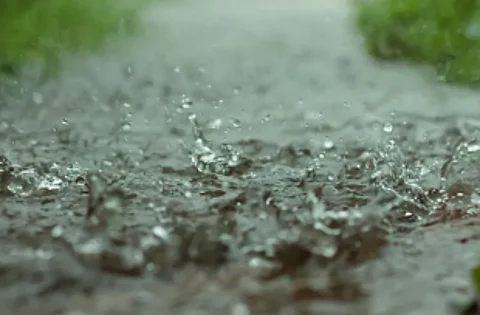

There is no written record of this earlier, which makes the year unique. But this same rain is an urgent reminder that Goa is beginning to experience the effects of climate change. There is nothing normal in the rain we are getting. December has received a little rain in past years, usually a drizzle or at times even a stronger shower that can upset a few plans. But rarely has it poured in such manner as it has in the past two days. The reason for the rains is a cyclonic circulation over the Arabian Sea that in just 24-hours brought close to 61.9mm of rainfall in the State. Panjim, on the other hand, recorded its highest single-day rainfall of 102mm in any day of December.
Records apart that will be written in the books and preserved, Goa has to take a more serious look at the unseasonal storms that have been buffeting it for any climate change fallout. The Arabian Sea has always been a calm water body with few cyclones originating from here, keeping Goa relatively safe. This has changed in the past years and other than Cyclone Tauktae that sent a grim reminder of a change in the weather patterns in May this year, Goa has experienced the fury of Cyclone Nisarga in June 2020, Cyclone Kyarr in October 2019, Cyclone Vayu iIn June 2018 and Cyclone Ockhi in December 2017. All these cyclones made landfall on the western coast of India after passing off the coast of Goa and going northward. Goa was spared the full fury of these cyclones, but experienced cyclones a phenomenon that otherwise was rare in the coastal State.
Climate scientists have noticed that there have been more cyclones originating in the Arabian Sea in recent years and this is a matter of concern. This year, after Cyclone Tauktae the December storm is the second reminder of how nature will hit back if it is constantly tampered with. The evidence that these changes in the weather pattern are not mere aberrations in a particular year, but that there is a pattern are getting clearer as time moves on. The increasing cyclones and the tough seas that lead to warnings to fishermen not to venture to the sea were not as common once as they are today. The latter warning was usually only given out during the monsoon, with the rest of the year being fairly safe for fishing or even for swimming in the sea. It’s been changing since then and the changes are definitely not for the better.
The climate change battle cannot be fought in isolation with merely Goa acting on it and the other States not doing their bit, but the State can lead the way on the west coast in mitigating climate change. With the cyclones in the Arabian Sea now very active and causing devastation the vulnerability of the coast of Goa is getting exposed. Goa should engage with Gujarat, Maharashtra, Karnataka and Kerala as all these State getting as affected by the weather changes on the west coast as is Goa. It requires only some political will to take this seriously. Goa, and so too the other States on the west coast, have constantly ignored the climate change that is occurring. But nature’s fury cannot be escaped. It has already manifested and will return to remind the decision makers that it is time to take measures to reverse climate change. Ignoring this will be at the peril of the land and the people.